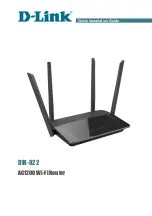
7.1 Introduction to MSTP
This section describes definition and purpose of MSTP.
Definition
Generally, redundant links are used on an Ethernet switching network to provide link backup
and enhance network reliability. The use of redundant links, however, may produce loops,
causing broadcast storms and rendering the MAC address table unstable. As a result, the
communication quality deteriorates, and the communication service may even be interrupted.
The Spanning Tree Protocol (STP) is introduced to solve this problem.
STP refers to STP defined in IEEE 802.1D, the Rapid Spanning Tree Protocol (RSTP) defined
in IEEE 802.1w, and the Multiple Spanning Tree Protocol (MSTP) defined in IEEE 802.1s.
MSTP is compatible with RSTP and STP, and RSTP is compatible with STP.
the comparison between STP, RSTP, and MSTP.
Table 7-1
Comparison between STP, RSTP, and MSTP
Spanning
Tree
Protocol
Characteristics
Usage Scenario
STP
l
In an STP region, a loop-free tree
is generated. Broadcast storms are
prevented and redundancy is
achieved.
l
Route convergence is slow.
STP or RSTP is used in a scenario
where all VLANs share one spanning
tree. In this situation, users or services
do not need to be differentiated.
RSTP
l
In an RSTP region, a loop-free tree
is generated. Broadcast storms are
prevented and redundancy is
achieved.
l
RSTP allows fast convergence of
the network topology.
MSTP
l
In an MSTP region, multiple loop-
free trees are generated.
Therefore, broadcast storms are
prevented and redundancy is
achieved.
l
MSTP achieves fast convergence
of the network topology.
l
MSTP implements load balancing
among VLANs. Traffic in
different VLANs is transmitted
along different paths.
MSTP is used in a scenario where
traffic in different VLANs is
forwarded through different spanning
trees that are independent of each other
to implement load balancing. In this
situation, users or services are
distinguished by using VLANs.
Huawei AR530&AR550 Series Industrial Switch Routers
Configuration Guide - Ethernet Switching
7 MSTP Configuration
Issue 01 (2014-11-30)
Huawei Proprietary and Confidential
Copyright © Huawei Technologies Co., Ltd.
223
















































